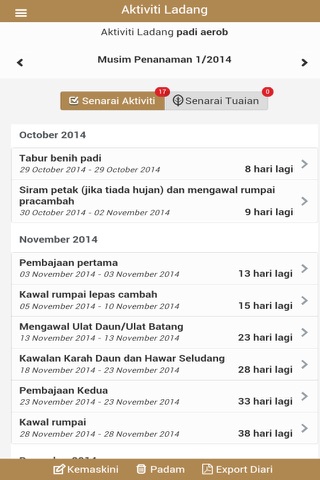
MARDI Padi Aerob app for iPhone and iPad
Developer: MARDIApps
First release : 20 Jan 2015
App size: 58.77 Mb
This application is used to send reminders to farmers on the smart phones or tablets, on the activities they should do for the planting of Aerobic rice. There are strict schedules that they should follow, to ensure that the paddy gives the highest yield, with soil fertility. The app also reminds the farmer when it is time to do certain activities. It has a calendar where all the activities are recorded, including the farmers personal schedules. The mobile app need to be registered before it can be used. The registration includes the farmers biodata and field information. There are also other features such as graphs, where the farmer can view the profits and costs for each harvesting season. The app also provides several other general information regarding the Aerobic rice planting.
Aerobic rice is rice planting new system aims to reduce water requirements for rice. In aerobic rice production systems, high-yielding rice varieties cultivated in aerobic soil conditions such as without stagnant water, use of inputs (especially fertilizers) provide high response for assistance if irrigation water is not enough rain. The different aerobic rice with upland rice using low yielding rice varieties and the use of low input without the help of irrigation. Aerobic rice cultivation can reduce the use of water from the irrigation system so that 50% or more compared with water requirements for rice.
Aerobic rice grown in paddy fields potentially have the experienced frequent water shortages, rain catchment area which allows aerobic rice is grown in the off-season and also in the area of land suitable for crop rotation or intercropping where there is irrigation infrastructure in the area. Aerobic rice is grown in rotation will reduce the incidence of disease by destroying the pathogen life cycle of the previous crop diseases. If grown as an intercrop in the replanting of rubber or oil palm (0-3 years), land use can be maximized while increasing farmers income.



